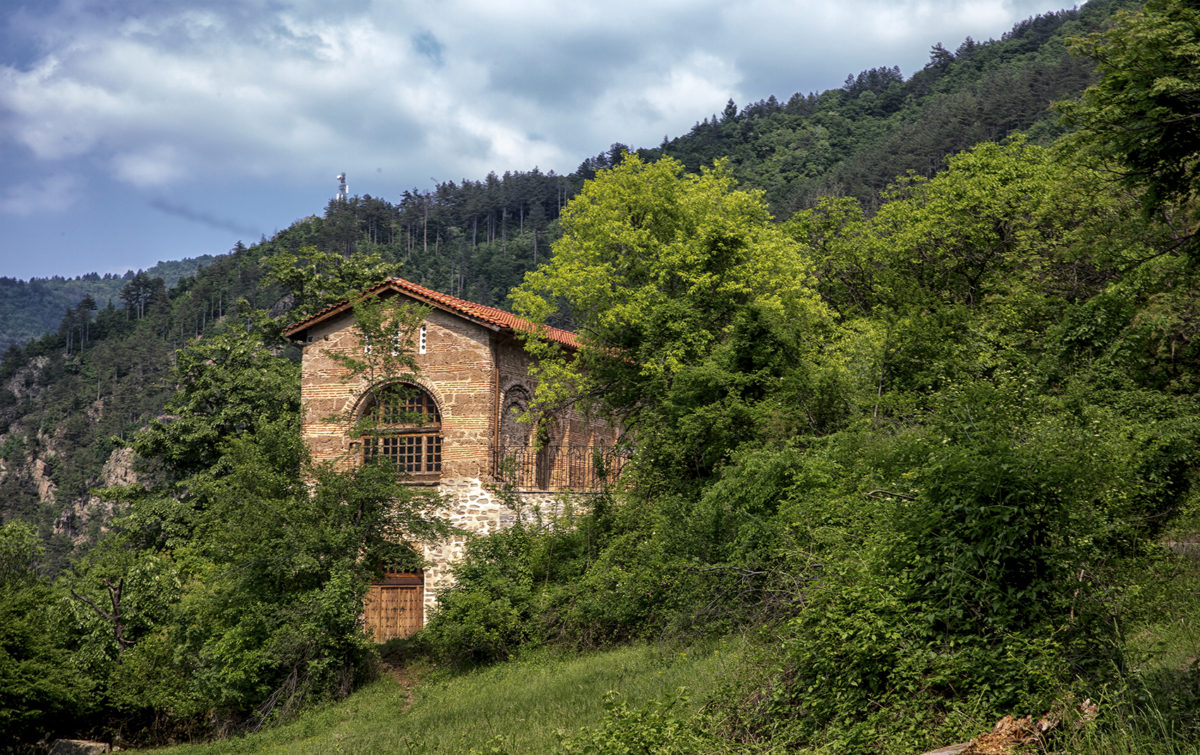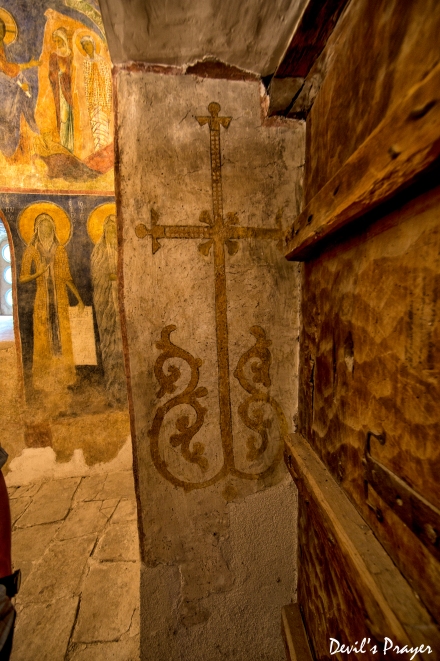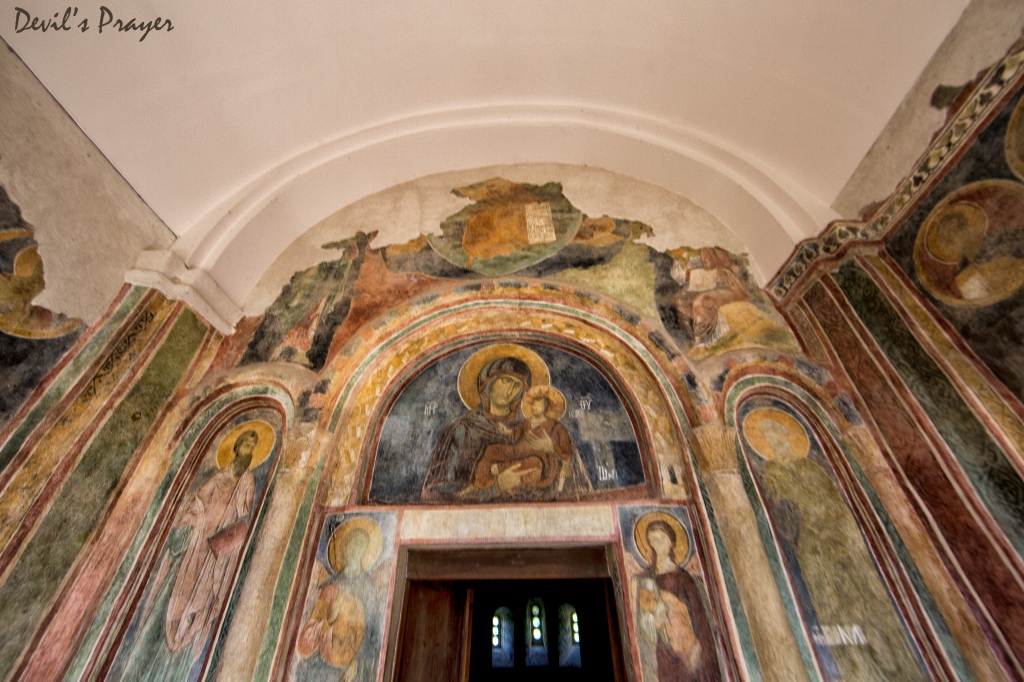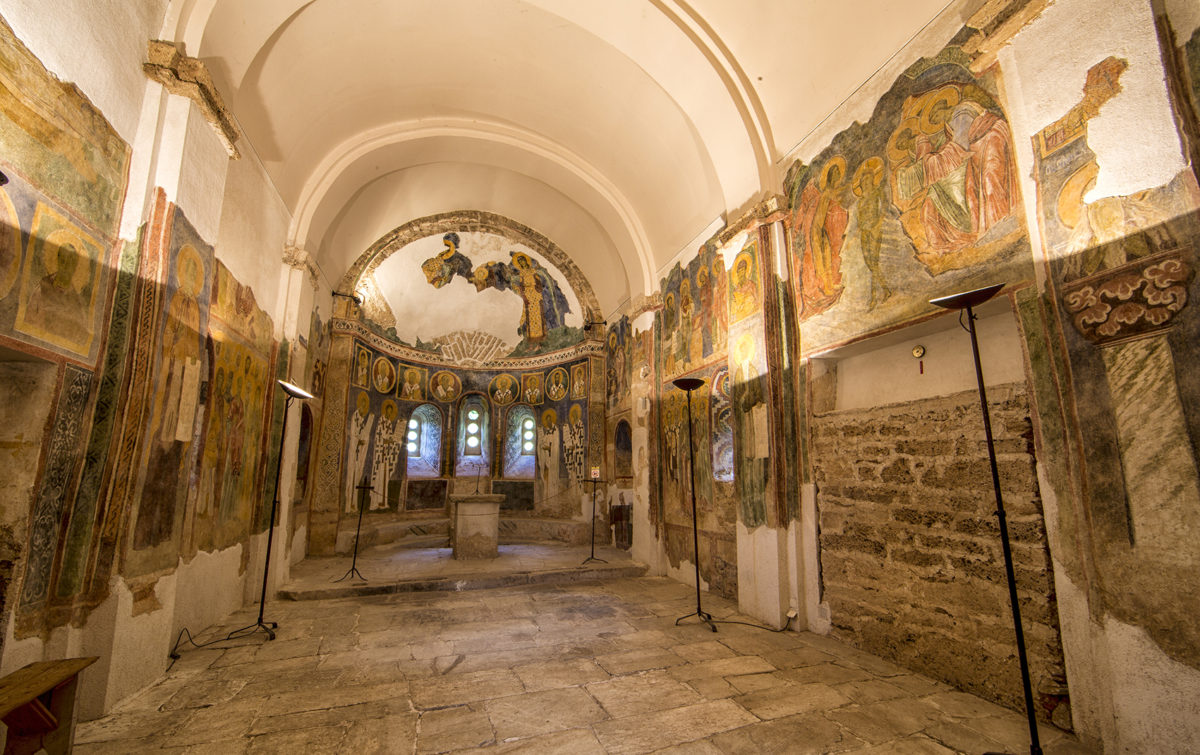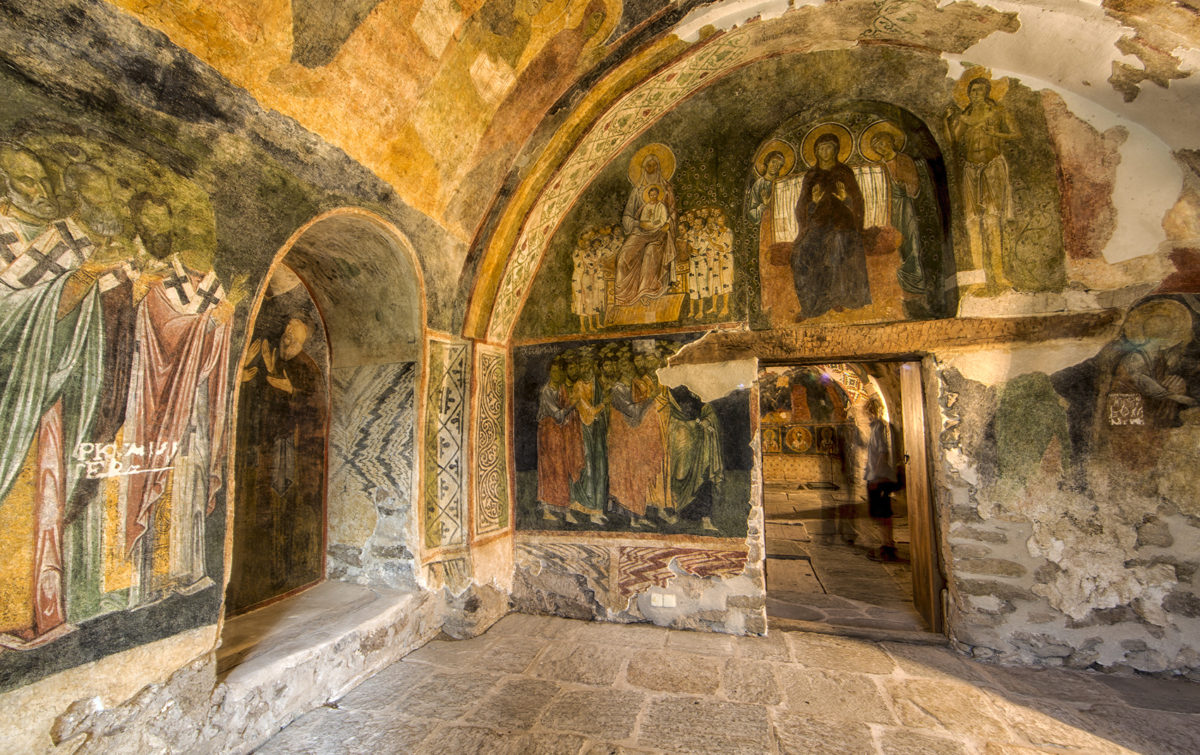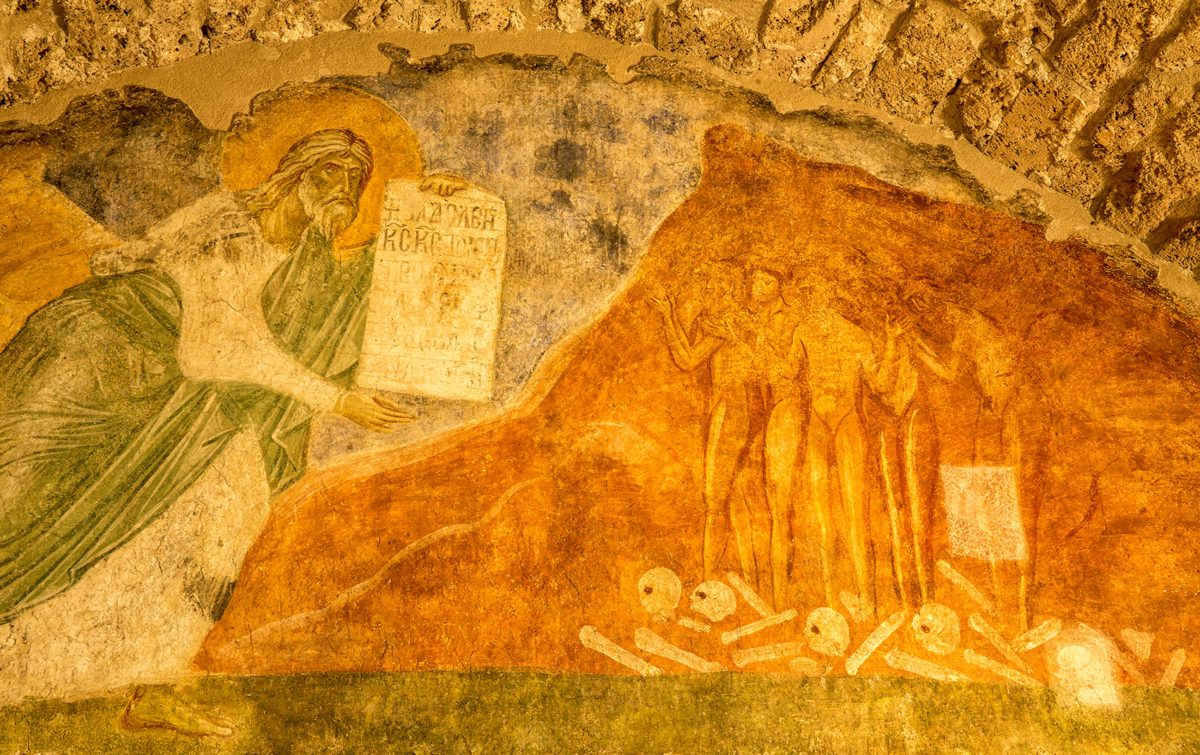The Bachkovo Monastery was founded in 1083AD by Gregory Pakourianos as a Georgian dominated Orthodox monastery. The monastery is known and appreciated for the unique combination of Byzantine, Georgian and Bulgarian culture, united by the common faith. It is a UNESCO monument.
The monastery was looted and destroyed in the 14th Century by the Turkish invasion. Yet the monastery’s Ossuary was mysteriously exempt of this looting and destruction. It is the only part of the original monastery which still stands today. The rest of the monastery was restored from the end of the 15th Century onwards.
The Ossuary, comprised of two levels, has 11th century mural paintings which are extremely valuable specimens of Orthodox art. At the entrance of the upper floor, in the ante chamber to the church, is a famous medieval portrait of Bulgarian King Ivan Alexander.
The ante chamber also has saints Constantine and Helena depicted on the walls.
The ante chamber is separated from the church by thick walls and solid wooden doors, painted with the Georgian Cross depicting the strong influence of the Georgians in the construction and running of this monastery in the 11th and 12th Century. Above the doorway arch is the mural of the Madonna and child.
The upper floor houses the Holy Trinity Church. It is similar in construction to the upper floor of the Church of the Holy Mother of God in Asen’s Fortress; a semi circular area around the altar with 3 openings to allow sunlight in.
The lower floor consists of the Ossuary. The antechamber is covered with murals including one of the Virgin dressed in red.
The main room was originally built with 14 burial niches which are unmarked. These fourteen burial niches were specifically constructed in advance under the floor pavement making it unique, their style not found in other ossuaries anywhere else in the world. It would appear that the original ossuary was specifically designed to house fourteen specific corpses.
Today there is a graveyard outside the fenced area of the Ossuary where the monks are buried. Approximately eight years after burial, the remains are exhumed and transferred to one of the fourteen burial niches inside the Ossuary. This same Ossuary also contains the only known fresco of Ezekiel’s Apocalypse.
